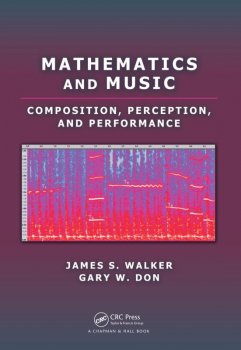Mathematics and Music: Composition, Perception, and Performance by James S. Walker and Gary W. Don

English | Publisher: CRC PRess, 2013 | 334 pages | PDF | 13,5 MB
At first glance, mathematics and music seem to be from separate worlds―one from science, one from art. But in fact, the connections between the two go back thousands of years, such as Pythagoras’s ideas about how to quantify changes of pitch for musical tones (musical intervals). Mathematics and Music: Composition, Perception, and Performance explores the many links between mathematics and different genres of music, deepening students’ understanding of music through mathematics.
In an accessible way, the text teaches the basics of reading music and explains how various patterns in music can be described with mathematics. The authors extensively use the powerful time-frequency method of spectrograms to analyze the sounds created in musical performance. Numerous examples of music notation assist students in understanding basic musical scores. The text also provides mathematical explanations for musical scales, harmony, and rhythm and includes a concise introduction to digital audio synthesis.
Along with helping students master some fundamental mathematics, this book gives them a deeper appreciation of music by showing how music is informed by both its mathematical and aesthetic structures.
Web Resource
On the book’s CRC Press web page, students can access videos of many of the spectrograms discussed in the text as well as musical scores playable with the free music software MuseScore. An online bibliography offers many links to free downloadable articles on math and music. The web page also provides links to other websites related to math and music, including all the sites mentioned in the book.
Features:
- Provides thorough coverage—more so than any available book—of spectrograms for
analyzing the sound of recorded music
- Gives equal emphasis to mathematics and music
- Requires only high school mathematics and no prior experience reading music
- Discusses harmony and rhythm, including the mathematical similarities of pitch and
rhythm
- Presents an in-depth yet accessible treatment of the Geometry of Harmony as found in
the Tonnetz, enabling students to follow many of the current ideas in music theory and
the mathematics of music
- Explains the principal methods of audio synthesis
- Includes an extensive set of exercises after each section, with some focusing on
mathematics and others involving musical examples to show how mathematics relates to
music
- Offers video demos, links to articles, music software, and musical scores on the book’s CRC
Press web page
